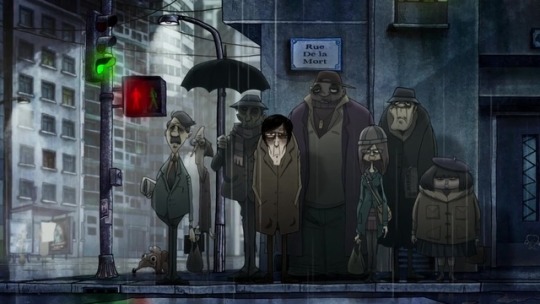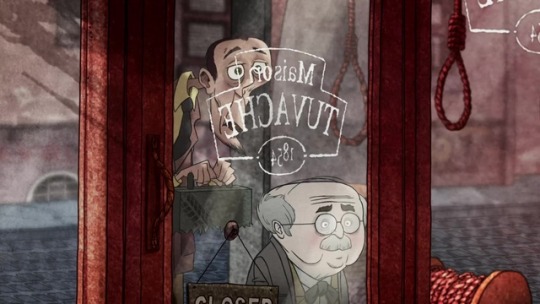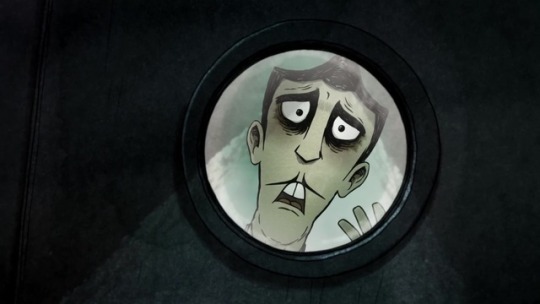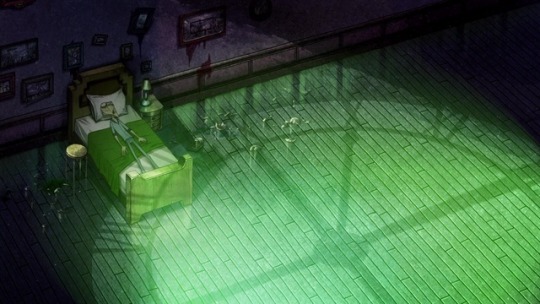#Pierre-François Martin-Laval
Explore tagged Tumblr posts
Text
SPAMALOT, on rit énormément au Théâtre de Paris avec ce musical, entretiens avec PEF et 2 comédiens
Ce sont les derniers jours de Spamalot, qui joue les prolongations jusqu’au 10 Février Pour ceux qui n’ont pas encore eu l’occasion de rire aux éclats, n’hésitez pas, le musical se joue au Théâtre de Paris, où j’ai rencontré Pierre François Martin Laval: Mais ce n’est pas tout, voici deux des comédiens / chanteurs qui ont accepté de jouer au jeu : Question Réponse : Ricardo Lo Giudice &…

View On WordPress
0 notes
Text

Pierre François Martin-Laval, Les Vengeances de Maître Poutifard, 2023
0 notes
Text
Série ER

Série ER est une série télévisée dramatique médicale française diffusée sur TF1 de 1994 à 2009. La série suit la vie du personnel d'un hôpital dans la ville fictive de Lyon. La série a été créée par Jean-Claude Sirven et a été réalisée par PierreJOJO. Elle met en scène Pierre-François Martin-Laval dans le rôle du Dr Claude Eridan et Julie Gayet dans celui du Dr Sandrine Rousseau. La série a connu un énorme succès en France, et a été l'une des émissions les plus regardées sur TF1. Elle a remporté de nombreux prix, dont le Prix Général de la Télévision. La série a également été populaire à l'échelle internationale, et a été diffusée dans plus de 100 pays.
Les meilleurs épisodes d'ER
Il y a tellement d'excellents épisodes d'Urgences qu'il est difficile d'en choisir seulement quelques-uns ! Cependant, voici quelques-uns de nos préférés : 1) L'épisode pilote - C'est l'épisode qui a tout déclenché ! Nous rencontrons tous les personnages principaux et nous découvrons le monde trépidant des urgences. 2) L'épisode de l'accident de bus - Cet épisode est plein de suspense et de drame, alors que le personnel des urgences tente de sauver la vie des victimes d'un horrible accident de bus. 3) Le final de la saison - Le final de la saison d'Urgences est toujours un épisode à ne pas manquer ! Cette année, le final était particulièrement déchirant, car nous avons dit au revoir à un personnage bien-aimé. 4) L'épisode de Noël - ER fait toujours un excellent travail en mélangeant des moments réconfortants avec le chaos habituel des urgences. L'épisode de Noël ne fait pas exception à la règle, puisque le personnel se réunit pour sauver la vie d'un bébé. 5) L'épisode de George Clooney - Nous ne pouvions pas faire une liste des meilleurs épisodes d'Urgences sans inclure au moins un épisode mettant en scène le plus célèbre des anciens de la série, George Clooney. Dans cet épisode, le personnage de Clooney, le Dr Doug Ross, est confronté à une décision difficile lorsque la vie d'un patient est en jeu.
L'héritage d'ER
Le drame médical ER a été l'une des émissions de télévision les plus populaires des années 1990. La série suivait la vie du personnel de l'hôpital fictif County General à Chicago. ER était révolutionnaire à bien des égards. C'était l'une des premières émissions à dépeindre de manière réaliste la nature chaotique d'un hôpital en pleine activité. La série présentait également des personnages diversifiés, ce qui était rare à l'époque à la télévision. ER a été un succès critique et commercial. Elle a remporté de nombreux prix, dont le prestigieux Peabody Award. La série a également été un véritable succès d'audience, avec une moyenne de plus de 30 millions de téléspectateurs par épisode à son apogée. On attribue souvent à ER le mérite d'avoir popularisé le genre du drame médical. Elle a donné naissance à de nombreux imitateurs, mais aucun n'a été capable d'égaler son succès. L'émission a mis fin à ses 15 ans de diffusion en 2009, mais son héritage se poursuit encore aujourd'hui. ER est largement considéré comme l'une des meilleures émissions de télévision de tous les temps.
Que sont devenus les personnages d'ER ?
Depuis la fin d'ER en 2009, qu'est-il arrivé aux personnages que nous avons tous appris à aimer ? Le Dr Doug Ross (George Clooney) a été vu pour la dernière fois travaillant dans une clinique gratuite à Los Angeles. Il est maintenant marié à Carol Hathaway (Julianna Margulies) et ils ont deux enfants ensemble. Le Dr John Carter (Noah Wyle) s'est également retrouvé à Los Angeles après la fin d'ER. Il travaille maintenant comme médecin urgentiste dans un hôpital. Il est marié à Abby Lockhart (Maura Tierney) et ils ont un fils ensemble. Le Dr Peter Benton (Eriq La Salle) est maintenant chirurgien plastique à Chicago. Il est marié au Dr Elizabeth Corday (Alex Kingston) et ils ont un fils ensemble. Le Dr Mark Greene (Anthony Edwards) est décédé d'une tumeur au cerveau en 2006, mais son héritage se perpétue à travers sa femme, Elizabeth (Glen Close), et leurs deux filles. Le Dr Kerry Weaver (Laura Innes) est maintenant chef du personnel de l'hôpital du comté de Cook à Chicago. Elle est mariée au Dr Sandy Lopez (Yaniv Rokah) et ils ont une fille ensemble. Le Dr Luka Kovac (Goran Visnjic) travaille maintenant comme médecin en Croatie. Il est marié au Dr Caroline (Leah Renee) et ils ont un fils ensemble. Le Dr Cleo Finch (Michael Michele) travaille maintenant comme médecin à New York. Elle est mariée au Dr Benton et ils ont un fils ensemble. Dr Jing-Mei "Deb" Chen (Ming-Na Wen) Chen (Ming-Na Wen) travaille actuellement comme médecin à San Francisco. Elle est mariée au Dr Greg Pratt (Mekhi Phifer) et ils ont un fils ensemble. Le Dr Abby Lockhart (Maura Tierney) travaille maintenant comme infirmière à Chicago. Elle est mariée au Dr. John Carter et ils ont un fils ensemble.
La vie après ER : le casting hier et aujourd'hui
Cela fait plus de deux décennies qu'ER a été diffusé pour la première fois sur NBC, mais le drame médical occupe toujours une place spéciale dans le cœur des fans. La série a été un véritable succès d'audience pendant les 15 saisons qu'elle a duré, et a contribué à lancer la carrière de plusieurs de ses stars. Depuis la fin de la série en 2009, les acteurs ont réalisé des choses étonnantes. Voici un aperçu de ce que les acteurs d'Urgences font aujourd'hui. George Clooney George Clooney était déjà connu de tous lorsqu'il a rejoint le casting d'Urgences en 1994, mais la série a contribué à consolider son statut d'acteur principal. Il a quitté la série en 1999 pour se concentrer sur sa carrière cinématographique et a depuis reçu plusieurs nominations aux Oscars (dont une victoire) et a été acclamé par la critique pour son travail dans des films comme Syriana, Up in the Air et The Descendants. Clooney est également un militant politique franc et a participé à des opérations de secours lors de catastrophes naturelles comme l'ouragan Katrina et le tremblement de terre de 2010 en Haïti. Julianna Margulies Julianna Margulies a rejoint le casting d'Urgences dès la deuxième saison et est rapidement devenue l'une des favorites des fans pour son interprétation de l'infirmière Carol Hathaway. Elle a remporté un Emmy pour son travail dans la série en 1995, puis a joué dans un certain nombre de films et de séries télévisées après la fin d'Urgences, notamment The Good Wife, qui lui a valu un autre Emmy. Mme Margulies joue actuellement dans la pièce Time Stands Still à Broadway. Noah Wyle Noah Wyle a joué le rôle de l'étudiant en médecine John Carter dans Urgences, et a participé à la série pendant toute sa durée. Depuis, il a joué dans un certain nombre de séries télévisées et de films, dont la série Falling Skies de TNT et la mini-série The Pacific produite par Steven Spielberg. Wyle est également un philanthrope actif et s'est impliqué dans des organisations telles que le Teenage Cancer Trust et la Fondation Make-A-Wish. Eriq La Salle Eriq La Salle a joué le rôle du Dr Peter Benton dans Urgences, où il a joué pendant huit saisons. Depuis, il est apparu dans un certain nombre de séries télévisées et de films, notamment 24, CSI : NY et The Human Stain. La Salle est également réalisateur et a dirigé des épisodes de séries comme House of Cards et How to Get Away with Murder. Anthony Edwards Anthony Edwards a joué le rôle du Dr Mark Greene dans Urgences, et a participé à la série pendant toute sa durée. Depuis, il est apparu dans un certain nombre de séries télévisées et de films, dont Zero Hour, Revenge et It's Complicated. Edwards est également un philanthrope actif, et il est membre du conseil d'administration de l'organisation environnementale Oceana. Sherry Stringfield
Qu'est-ce qu'ils sont devenus ? Les stars d'ER
Cela fait plus de 20 ans qu'Urgences a été diffusé pour la première fois à la télévision, et l'émission a rapidement connu un succès massif. Le drame médical a duré 15 saisons et a été l'une des émissions les plus populaires des années 90 et du début des années 2000. Bien qu'ER ait compté de nombreux acteurs talentueux, quelques stars se sont vraiment distinguées. Voici un aperçu de ce que font aujourd'hui certains des principaux acteurs de la série. George Clooney George Clooney a joué le rôle du Dr Doug Ross dans Urgences de 1994 à 1999. Il était l'un des personnages les plus populaires de la série et son départ a été un coup dur pour les fans. Depuis ER, Clooney a poursuivi une carrière incroyablement réussie. Il a joué dans des films à succès comme Ocean's Eleven, Up in the Air et The Descendants. Il a également réalisé des films comme The Ides of March et Good Night, and Good Luck. Clooney a remporté deux Oscars, celui du meilleur second rôle pour Syriana et celui du meilleur film pour Argo. Il a également été nommé pour plusieurs Golden Globe Awards et BAFTAs. Aujourd'hui, Clooney est tout aussi connu pour son travail humanitaire que pour son métier d'acteur. Il est un messager de la paix de l'ONU et il s'est impliqué dans un certain nombre de causes caritatives. En 2013, Clooney a épousé l'avocate Amal Alamuddin. Le couple a des enfants jumeaux, Alexander et Ella, qui sont nés en 2017. Julianna Margulies Julianna Margulies a joué le rôle de l'infirmière Carol Hathaway dans la série ER de 1994 à 2000. La relation de son personnage avec le Dr Ross était l'une des intrigues les plus populaires de la série. Depuis Urgences, Margulies a connu une carrière très réussie. Elle a remporté un Golden Globe et un Emmy Award pour son rôle dans The Good Wife. Elle a également joué dans des films comme City Island et Stand Up Guys. Ces jours-ci, Margulies joue dans la série télévisée The Good Fight. Elle a également été nominée pour plusieurs Tony Awards pour son travail sur scène. Margulies est mariée à l'avocat Keith Lieberthal. Le couple a deux fils, Kieran et Caleb. Noah Wyle Noah Wyle a joué le rôle du Dr John Carter dans ER de 1994 à 2009. Il a été l'un des plus anciens acteurs de la série et son personnage a connu de nombreux hauts et bas au fil des ans. Depuis ER, Wyle a joué dans des films comme Donnie Darko, The Librarian et Steve Jobs. Il a également eu des rôles dans la série ER. Série ER est l'un des drames médicaux les plus populaires de tous les temps. Elle suit la vie du personnel de l'hôpital général du comté de Chicago. La série a été révolutionnaire pour sa représentation réaliste de la profession médicale et des défis auxquels les médecins et les infirmières sont confrontés au quotidien. C'est également l'une des premières séries à aborder le problème du VIH/SIDA. La série a connu un énorme succès, avec 15 saisons et de nombreux prix. Les fans du monde entier s'en souviennent encore très bien. Read the full article
0 notes
Text
Gaston Lagaffe (2018) [FR/BE]
¡Oi! Spoilers, stavfel och alternativa fakta kan förekomma rakt föröver!

Ingen kan producera serietidningsfilmer fransmännen. När jag läste att min ungdomsfavorit Gaston skulle bli spelfilm såg jag fram emot det hela. Jag har de senaste åren läst om serierna allt efter Cobolt föralg släppt den i nu inbunden upplaga. Och i den här uppdaterade versionen är det inte tidningsförlaget ”Spirou” som Gaston blir praktikant hos utan succéstartup: en ”Idehörnan”. Gaston (Théo Fernandez) är som klippt och skuren för företaget, synd bara att hans chef Prunelle (regissör Pierre-François Martin-Laval) ser möjligheterna i hans uppfinningar när företaget skall hitta nya användningsområden för allt mellan tumlösa vantar och tredubbla hängslen.
Jag har inga problem med uppdateringen, även om Gaston givetvis inte är lika malplacerad på Idéhörnan som på kontoret till tidningsförlaget. Man har hittat bra skådespelare till alla rollerna, speciellt bra måste jag säga att man lyckats med Jeanne (Janette i de svenska serierna). Alison Wheeler fångar karaktären bra och är precis så lite smånördig och tafatt som hon är i serierna. Janette har dessutom alltid varit en gnutta mer än bara ett kärleksintresse, och det tycker jag man lyckats bibehålla. Överlag har man lyckats bra med att fälla in fler kvinnliga ansikten utan att det känns krystat – att ge De Mesmaeker (Jérôme Commandeur) investeraren som vill köpa Idéhörnan en kvinnlig assistent är ett smart sätt att göra det på. Att Assistenten Kiglouss (Silvie Laguna) dessutom är väldigt vältalig (trots att hon i princip inte säger ett ord) är humor i sig. Visuellt så känner man igen sig från serierna, även om den rör sig i modernare tider. Gastons härjningar är dessutom av den typ som aldrig blir riktigt föråldrad, och som Janette noterar i filmen: Gaston vill egentligen allas väl – det går bara inte så bra alla gånger han försöker.
Inte en aning om varför folk satt så långa betyg, själv var jag utomordentligt road igenom hela filmen. Men det krävs ju viss koncentration att se filmen när man inte kan franska. Det går liksom inte som med engelsk-/svenskspråkiga produktioner och hålla ett öga på mobilen samtidigt.
Inget sagt om en uppföljare, snyft, men en film som jag anser är väl värd att framtidssäkra med ett dvd-inköp. Undrar om Spirou-filmen är lika bra? Har sämre erfarenheter av den serien.
Länkar.
Filmen @ Vodeville
Filmen @ IMDb.
Filmen @ Play Pilot.
Filmen @ Studio S.
Serien @ Cobolt Förlag.
#senast sedda film#last seen movie#gaston#gaston lagaffe#komedi#comedy#baserad på seriealbum#based on comic book#pierre-françois martin-laval#mathias gavarry#théo fernandez#jérôme commandeur#alison wheeler#silvie laguna#arnaud ducret#christian lundberg#bleeding fingers music#fr#be#2018
36 notes
·
View notes
Photo

“Cinéman“ by Yann Moix (2009) Pierre-François Martin-Laval as Douglas Craps in Las Slinillas
#cineman#yann moix#las salinillas#pierre-françois martin-laval#cinema#western#almeria#tabernas desert
2 notes
·
View notes
Text

#131 (#14) RRRrrrr!!! (2004)
#rrrrrrr!!!#alain chabat#gilles conseil#samir guesmi#damien jouillerot#gaëlle cohen#jean rochefort#gérard depardieu#jean-paul rouve#joseph beddelem#pierre-françois martin-laval#maurice barthélémy#élise larnicol#09.02.2019#131#14#tv#re-watch#2004
1 note
·
View note
Photo










The Suicide Shop (2012) Director - Patrice Leconte, Art Direction - Florian Thouret & Régis Vidal "You can give death to yourself but death itself is not free."
#scenesandscreens#the suicide shop#Patrice Leconte#Bernard Alane#Isabelle Spade#Kacey Mottet Klein#Isabelle Giami#Pierre-François Martin-Laval
56 notes
·
View notes
Photo






#gif#alcool#cinéma#les profs 2#les profs#pierre-françois martin-laval#2015#stefi celma#raymond bouchard#kev adams#vin#wine#vodka#bière#beer
1 note
·
View note
Photo

- This shampoo war has lasted 800 years. 800 years on the 25th. We must break the circle of failure. Here's what I suggest. What do you think? - You didn't say anything. - Right, sorry.
RRRrrrr!!!, Alain Chabat (2004)
#Alain Chabat#Maurice Barthélémy#Marina Foïs#Pierre François Martin Laval#Jean Paul Rouve#Elise Larnicol#Pascal Vincent#Gérard Depardieu#Samir Guesmi#Jean Rochefort#Édith Le Merdy#Valérie Lemercier#Olivier Baroux#Laurent Dailland#Frédéric Talgorn#Juliette Welfling#2004
4 notes
·
View notes
Text

RRRrrrr!!! ★★★☆☆
Ca va être tout noir...
TA GUEULE !
#RRRrrrr!!!#2004#Alain Chabat#Maurice Barthélemy#Marina Fois#Jean Paul Rouve#Pierre François Martin Laval
1 note
·
View note
Photo










Movie gifset ‣ Les Profs
Alors aujourd'hui, on invente un exercice... on le fait... on le corrige... Tout seul et en silence. Vous avez 45 minutes. C’est parti.
#les profs#kev adams#pierre françois martin-laval#isabelle nanty#christian clavier#françois morel#stéfi celma#arnaud ducret#raymond bouchard#philippe duclos#eric naggar#film#français#gifset#crumble#movie gifset#mine:movies
7 notes
·
View notes
Photo


Les années Gaston... - 1981 : “Fais gaffe à La gaffe !” (Paul Boujenah) - 2018 : “Gaston Lagaffe” (Pierre François Martin-Laval)
#M'enfin!#Gaston Lagaffe#movie poster#Fais gaffe à La gaffe !#Paul Boujenah#Pierre François Martin-Laval#Roger Mirmont#Théo Fernandez
2 notes
·
View notes
Photo

Le mystérieux Docteur Martin(1895-1969)
Le parcours d'Henri Martin reste un symbole de l'activisme politique, ayant passé la totalité de sa vie dans une semi-clandestinité, et étant l'une des rares personnes à avoir été traquées par la police sous quatre régimes différents. Son histoire qui n’a rien à envier à celle de Jason Bourne, mériterait d’être racontée à travers une série télévisée.
De l’action française à La Cagoule :
Parisien de naissance Henri Martin s’engage très tôt à l’Action Française dès 14 ans. En effet, un jour de 1909, ses parents découvrent au cinéma lors de la diffusion des informations Pathé, les prises de positions de leur fils portant l’oriflamme en tête du défilé de la fête royaliste de Jeanne d’Arc! Son père lui casse sa canne sur le dos!...Henri avait comme camarade de classe, Henri Lagrange, fameux camelot du roi mort en 1915 durant la guerre et qui l'avait motivé à rejoindre l’AF. Il s’engage ensuite comme volontaire pour le front en 1914 jusqu’en 1918. Dans les années 20 il devient un des meneurs des camelots du roi mais finit par se brouiller avec Maxime Real Del Sarte et il quitte l’organisation en 1930. Après avoir été le conseiller d’Henri Dorgerès, le dirigeant du mouvement paysans des “chemises vertes”, il est en 1935 l’un des fondateurs du CSAR, organisation nationaliste clandestine connue sous le nom de “la Cagoule” et dirigée par Eugène Deloncle. Celui-ci le charge du 2e Bureau, c'est-à-dire les services de renseignements de l'organisation, et son surnom est alors « le Bib ». Son travail consistait à mener des filatures, répertorier des informations personnelles et établir des fiches sur les adversaires politiques de la Cagoule. En 1937, tandis qu'une rafle frappe les membres de la Cagoule, il réussit à s'enfuir avec Jean Filliol, et s'exile à San Remo en Italie, accompagné de sa femme et de ses enfants. Suite à une grâce d'Édouard Daladier, il revient en France pour devenir capitaine médecin à l'hôpital de Bicêtre.
Vichy et résistance :
Après la défaite de 1940, il participe aux Groupes de Protection (GP), une organisation dépendant du Centre d'informations et d'études (CEI) de François Métenier et du colonel Groussard. Saluant l'arrivée au pouvoir du maréchal Pétain, mais hostile à toute forme de collaboration (elle épiait notamment les agissements de la Gestapo et des autorités militaires allemandes), elle regroupait majoritairement d'anciens cagoulards. En décembre 1940, dans le fil de son anti-germanisme, il monte l'opération visant à enlever Pierre Laval, jugé trop proche des Allemands. Laval est libéré peu après par Otto Abetz, tandis que le CEI et les GP sont dissous peu après (même s'ils continuaient à fonctionner officieusement). Arrêté en mars 1942, il est transféré à Castres, Vals, puis Évaux-les-Bains. Après s'être évadé, il rejoint le maquis et le « réseau Roy », participe à la libération de Lyon, et s'engage dans la Septième Armée du général Alexander Patch, où il accomplit plusieurs missions spéciales et dangereuses en Alsace et sur le Rhin.
Clandestinité d'après-guerre et OAS :
Lors de la procès de la Cagoule en 1948, le docteur Martin est condamné à une peine de déportation, qu'il n'accomplira pas, étant de nouveau en cavale. Il reprend ses activités clandestines, désormais contre La IVème République pour le maintien de l'Algérie française. Il participe dans les années 1950, avec les généraux Lionel-Max Chassin et Paul Cherrière, à l'organisation appelée « Grand O », active de 1954 à 58. En juin 1957 à la gare Saint-Lazare de Paris, il est arrêté par la police. Considérant qu'il ne constitue pas une menace pour le régime, il est mis en liberté provisoire en novembre. Après le premier putsch d'Alger, dont il est l'un des instigateurs, il rejoint le Mouvement populaire du 13 mai, dit MP-13. Collaborateur au journal Salut public de l'Algérie française, organe du MP-13, il est le conseiller de Robert Martel, avec lequel il finit par se brouiller. Proche de l'Organisation armée secrète (OAS), il est à nouveau recherché pour sa participation à la « Semaine des barricades » à Alger en janvier 1960, puis, encore une fois, pour son rôle dans le Putsch des Généraux du 23 avril 1961.
Cette fois, son anti-gaullisme ne lui est pas pardonné : arrêté pour de bon, il est condamné à 10 ans de travaux forcés en octobre 1963 par la Cour de sûreté de l'État.
Il est décédé le 6 juin 1969 à l'hôpital du Kremlin-Bicêtre, où il avait été mobilisé en 1939 comme médecin.
Photos : Henri Martin lors de son arrestation en 1957.
27 notes
·
View notes
Note
Hello, tu pourrais nous partager ta liste de films ?
Si tu parles de celle que j’ai élaborée “spécial confinement”, la voici :)
Au début je me suis demandée de quelle “liste de films” tu parlais. En fait, quand j’étais au collège, la-lycéenne-la-plus-sympa-de-mon-bahut m’avait refilé la liste de tous les films qu’elle avait vu avec l’option cinéma et qui lui avaient plu. Je ne sais pas du tout si je vous en ai déjà parlé. Le seul souci, c’est qu’elle n’est pas récente. Il faudrait au moins lui ajouter les films de mes années lycée et peut-être lui retirer quelques films des années 2000 qui avaient plu sur le coup, mais qui ne valent pas tant la peine que ça. Enfin, c’est un peu une liste de “rebelles”, une bonne partie des films ne sont pas très “grand public” ou ont été défoncés par les critiques Allociné :) Toujours est-il que des années après que l’on me l’ait refilé je vais toujours piocher dedans avec plaisir, et c’est en partie le cas pour la liste des 21 films que je vais mettre ici.
Il n’y a pas que des films, mais aussi un ballet et un ou deux films d’animation.
Comme je l’avais faite pour moi au départ, il y a aussi des “grands succès” que l’on a tous vu 10 fois et des films très “populaires”. Je mettrai peut-être des annotations pour me justifier parfois, surtout pour les films que je n’assume pas, où qui doivent faire l’objet d’une mise en garde :)
Gaston Lagaffe, Pierre-François Martin-Laval, 2018. ( La principale raison, c’est que quand j’avais 7 ans, Gaston était un peu mon idole - ouais je sais c’est bizarre, les filles de mon âge étaient à fond sur Barbie coeur de princesse (et le pire c’est que je n’osais même pas assumer que je n’aimais pas)).
L’Auberge Espagnole, Cédric Klapisch, 2002.
Délicatessen, Marc Caro et Jean-Pierre Jeunet, 1991. Celui-là, c’est un chef-d’oeuvre.
Mémoire effacée, Joseph Ruben, 2003
Ma part de gâteau, Cédric Klapisch, 2011
Le Péril jeune, Cédric Klapisch, 1994 (on sent la fan de Klapisch)
Le Seigneur des anneaux : La Communauté de l'anneau, Peter Jackson, 2001
Le Seigneur des anneaux : Les Deux Tours, Peter Jackson, 2002
Le Seigneur des anneaux : Le Retour du roi, Peter Jackson, 2003 (Ben quoi ? C’est l’occas’ de regarder les trois à la suite en version longue, non ?)
Le Hobbit : Un voyage inattendu, Peter Jackson, 2012 (Moi abuser ? Vraiment ?)
Le Hobbit : La Désolation de Smaug, Peter Jackson, 2013 ( Vais-je mettre ensuite le troisième volet ? Et bien...nan...Je ne l’ai pas en DVD....)
Le Monde de Narnia : Le Lion, la Sorcière blanche et l'Armoire magique, Andrew Adamson, 2005 ( Rassurez-vous je suis comme vous, et je l’ai vu moi aussi 15 fois depuis le CM1. C’était pour une après-midi chill)
Les quatre filles du Dr March, David Lowell Rich, 2 parties, 1978. (Je l’avais vu il y a longtemps. En attendant de voir la version de Greta Gerwig :) )
Autant en emporte le Vent, Victor Fleming, 1939. (Et là je me rends compte qu’il est important de mettre des commentaires parfois ! Je me dis, quitte à regarder des films sur la guerre de Sécession, autant y aller à fond. Et ce serait intéressant de voir quelle gueule a le film qui a eu le plus gros succès dans l’histoire de cinéma. Mais il est réputé pour avoir un fond raciste et prendre la position des sudistes, derrière l’histoire d’amour. Je verrai ce qu’il en est, mais autant être prévenu, il ne semble pas mériter son succès sur ce côté-là.)
Le Lac des Cygnes,Tchaikovski, 1877. (J’en ai deux versions différente et je ne sais pas laquelle regarder. Qu’importe, c’est sympa pour une soirée.)
Le Merveilleux Magasin de Mr. Magorium, Zach Helm, 2007. (Pour voir la Nathalie Portman des années 2000 aux cheveux court si chère à Augustus Waters :) )
Le Journal d’Anne Frank, Jon Jones, 2008. (Je me souviens encore de la critique dans Je Bouquine :) )
Le Bon Gros Géant, Steven Spielberg, 2016.
Harry Potter et les Reliques de la Mort, parties 1 et 2, David Yates, 2010 et 2011 (à la suite, c’est encore mieux)
Bande de filles, Céline Sciamma, 2014.
Mommy, Xavier Dolan, 2014
Le Tombeau des Lucioles, Isao Takahata, 1988 (Je l’avais vu à 14 ans, sans y être vraiment préparée. C’est l’un des seuls films pour lesquels j’ai pleuré. Je le rajoute ce soir, je pense que je suis “moralement” assez en forme pour le regarder en ce moment)
Voilà, j’espère que tu y trouvera ton compte, et que je ne publie pas ça trop tard, pour que les intéressé.es puissent y jeter un œil.
Et si vous devez en retenir un, je vous conseille vraiment Delicatessen.
9 notes
·
View notes
Text
L'élève Ducobu / Les Vacances de Ducobu
L’élève Ducobu / Les Vacances de Ducobu
– Titre original : L’élève Ducobu
– Date de sortie : 22 juin 2011
– Réalisé par : Philippe de Chauveron
– Synopsis: L’élève Ducobu s’est encore fait renvoyer d’une école. Cette fois, pour éviter de finir en pension, il n’a plus qu’une seule chance : réussir à Saint-Potache. Pour s’en sortir, ce cancre attachant va devoir se surpasser et mettre au point les tricheries les plus ingénieuses et les…
View On WordPress
#Bruno Podalydès#Bruno Salomone#Edgar Givry#Elie Semoun#François Viette#Héléna Noguerra#Joséphine de Meaux#Juliette Chapey#Pierre-François Martin-Laval#Vincent Claude
0 notes
Text
L'élève Ducobu / Les Vacances de Ducobu
L’élève Ducobu / Les Vacances de Ducobu
– Titre original : L’élève Ducobu
– Date de sortie : 22 juin 2011
– Réalisé par : Philippe de Chauveron
– Synopsis: L’élève Ducobu s’est encore fait renvoyer d’une école. Cette fois, pour éviter de finir en pension, il n’a plus qu’une seule chance : réussir à Saint-Potache. Pour s’en sortir, ce cancre attachant va devoir se surpasser et mettre au point les tricheries les plus ingénieuses et les…
View On WordPress
#Bruno Podalydès#Bruno Salomone#Edgar Givry#Elie Semoun#François Viette#Héléna Noguerra#Joséphine de Meaux#Juliette Chapey#Pierre-François Martin-Laval#Vincent Claude
0 notes